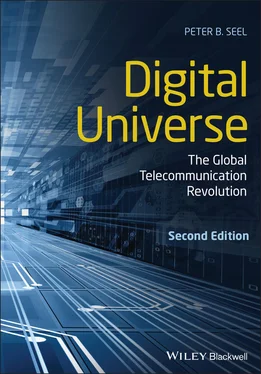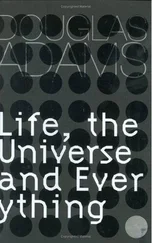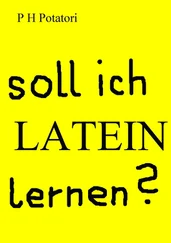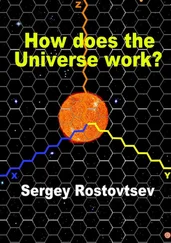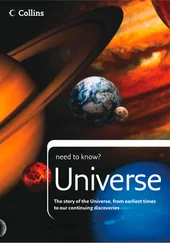1 ...6 7 8 10 11 12 ...15
The Social Construction of Technology
A key theoretical focus in the field of technology and science studies is the Social Construction of Technology (with the obligatory technology acronym of SCOT). Despite the technology-driven patterns in IC manufacturing and music distribution cited earlier, there are problems with the perspective that technology itself determines adoption. SCOT proponents are concerned with adopting a reductionist worldview that a society’s technology determines its cultural values, social structure, or history. Many social scientists and SCOT theorists would argue that the determinism arrow should flow in the opposite direction – that cultural values, social structures, economics, and history determine which technologies are created and adopted in a society.
In the SCOT-focused perspective, social constructivists such as Pinch and Bijker argue that technology adoption in a society is affected by a Principle of Symmetry where explanations for an innovation’s failure or success should equally weigh influential factors such as economics, cultural values, and government regulation. 20Despite its technological advantages over AM radio, FM was slow to diffuse in the United States in the 1940s due to efforts by some AM broadcasters and radio manufacturers with economic incentives to promote government regulation that inhibited it. A related area of study is Actor-Network Theory (ANT) that seeks to understand how the roles played by multiple individuals or agencies (the “actors”) influence technology adoption or rejection in a discrete environment or network. 21
Technologies are not created in a social vacuum – television pioneers Philo T. Farnsworth and Vladimir Zworykin did much of their research prior to 1940, but television’s widespread diffusion was delayed until after World War II, as electronics research between 1938 and 1945 focused on radar and sonar technologies used for military applications. A related complication in analysis arises from the unintended consequences of the use of the new tool, product, or service. Few engineers could foresee in the 1980s that putting mobile phones in the hands of drivers would lead to thousands of related auto accidents and deaths in the future. The irony is that, short of the unlikely near-term development of time travel, we cannot know what these unforeseen consequences might be. Nanotechnology, one of the key innovations that are facilitating the creation of ever more powerful CPUs on a chip, has raised questions about its safety when combined with dramatic advances in genetic engineering and biotechnology. 22We will analyze these concerns in Chapter 15on the future of the digital universe.
The Future of Moore’s Law
What is the future of Moore’s law? How much longer can it be sustained in the face of the fundamental laws of physics? Many computer engineers and scientists have predicted the imminent death of Moore’s law over the past 20 years, stating that there are fundamental physical limitations to how many circuits can be compressed on a chip before current leakage (and related heat build-up) cause it to fail to function as designed. The number of articles claiming that Moore’s law is “dead” increased to a crescendo after Intel encountered problems making its 10 nm chips work in 2018. Mike Muller, the CTO for competing chip maker Arm in Japan, said that same year, “Moore’s law is dead, Moore’s law is over.” 23Even Intel revised its take on the law in 2019, stating that the doubling interval had been extended from two years to two and a half years. 24Gordon Moore acknowledged these limitations in 2005:
In terms of size [of transistor] you can see that we’re approaching the size of atoms which is a fundamental barrier, but it’ll be two or three generations before we get that far – but that’s as far out as we’ve ever been able to see. We have another 10 to 20 years (from 2015 to 2025) before we reach a fundamental limit. By then they’ll be able to make bigger chips and have transistor budgets in the billions. 25
The development of nanotechnology has extended the life of Moore’s law by developing methods for the creation of ever-smaller circuits. Nanotechnology is the design and production of devices (and systems) at a scale that strains human comprehension. Dimensions are measured in nanometers (nm) – five atoms of silicon equal one nanometer. At this scale, a human hair is about 70,000 to 80,000 nanometers in width. The National Nanotechnology Initiative in the United States defines it as follows: “Nanotechnology is the understanding and control of matter at dimensions of roughly 1 to 100 nanometers, where unique phenomena enable novel applications.” 26
Manufacturers at TSMC in Taiwan, Intel and Apple in the United States, Arm in Japan, and Samsung in Korea have extended Moore’s law by developing new CPU and GPU (graphics) chips with 5 nm and even 3 nm architectures. 27These are circuit tolerances that nay-sayers said in the 2010s could never be achieved due to heat build-up. They are using new chip manufacturing technologies such as using 3D chip stacking and extreme ultraviolet light (EUV) to etch the extremely narrow circuits that make these new designs feasible.
These innovative manufacturing methods are part of a triad of technologies that may extend the life of Moore’s law past 2030 in terms of processing power and functionality. An expert said these new approaches to multifunction chip design will be “more than Moore.” 28The three areas that may prolong the doubling of chip processing power and storage capacity are:
Devices will move beyond silicon. Traditional CMOS (Complementary Metal-Oxide-Semiconductor) chips will be augmented with specialized processors that utilize elements such as Germanium and Gallium that are adjacent to Copper and Nickel on the periodic table. Designers are also creating new types of processors that could use evolving technologies such as photonic integrated circuits (PICs) that utilize wavelengths of visible and infrared light – and spintronics (spin transport electronics) chips that function at the subatomic electron level in processing and storing information.
The development of 3D chips that have multi-layers of processors and storage. Global chip makers are taking advantage of new materials outlined above and new manufacturing processes to stack layers of specialized circuits (much like a very complex club sandwich) to increase processing and storage capabilities, while simultaneously reducing power demands and related heat loads.
Computer users (and our mobile devices) will use a variety of specialized chips. Intel and other manufacturers are creating new designs with interconnected “chiplets” packaged on a larger device that include distinct multicore CPUs, GPU graphics, imaging, communications, I/O (input/output), and memory functions, often with varying circuit architectures between the chiplets. Some users with specialized processing needs will access devices such as Google’s TPU (Tensor Processing Unit) application-specific chips that are designed for machine learning functions operating in the cloud. In fact, much of the intensive processing now handled at the chip level can be accomplished by massive cloud-based servers for connected devices in the future. 29
Moore’s law will endure in a new form long after many pundits had predicted its demise, but the intricacy of the new three-dimensional (3-D), multi-function, super-processors of the future will take longer to develop and test. There is a related “law” at work here – Rock’s law, which states that the cost of chip fabrication (fab) plant doubles every four years, due to the complexity of making these new chipsets. 30The time frame between generation of new chips will stretch from every two years to three or more. The emerging design challenge for computer scientists and engineers is creating devices, operating systems, and programs that can utilize the immense processing power of these powerful chips. As these design and programming challenges are solved, the fundamental components of the mobile phone/digital camera/music player, notebook computers, and the widescreen home digital display will have greatly enhanced digital processing power. In the digital universe of the networked Internet of Things, we will see powerful chips embedded in every conceivable electronic product, as well as cars, homes, offices, and perhaps in ourselves to monitor our daily health.
Читать дальше
